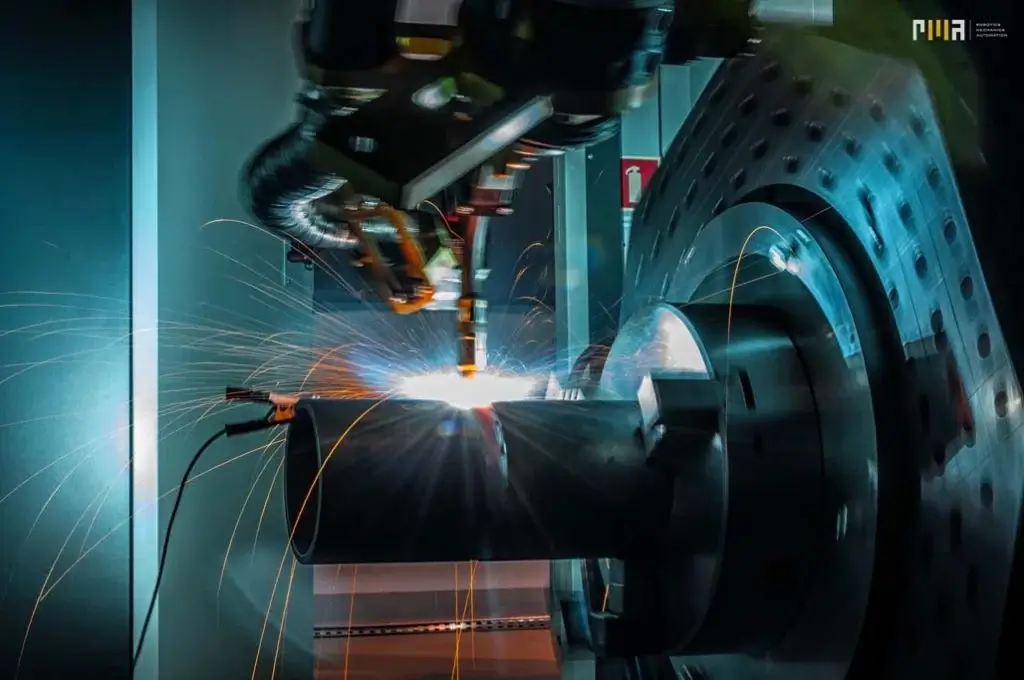
As a fundamental process in the manufacturing industry, welding is also steadily evolving. Predominant themes such as the Industry 4.0 and Internet of Things (IoT) have been joined by robotic welding, virtual reality, and machine intelligence, all being welding trends that are expected to prevail in 2019. At the same time, topics related to welding education and welder’s health and safety are gaining more attention.
Rapid growth in robotic welding
The use of robots in the industrial world is growing rapidly. According to the International Federation of Robotics, there were over 2 million operational industrial robots at the end of 2017. The number is estimated grow globally by over 80% in the coming years, approaching 3.8 million robots in 2021.
Welding robotics follows a similar trend. The global robotic welding market is projected to reach USD 5.96 billion by 2023, growing at 8,91% Compound Annual Growth Rate (CAGR). Asia Pacific is anticipated to be the largest global robotic welding market in the coming years, with China leading the growth in focusing on adopting welding robots in all possible industries. India, South Korea, Japan, and Thailand are growing markets on the region as well.
Lack of qualified welders is to continue
While welding automation allows for far higher productivity and repeatable quality, there will always be some areas and conditions where robots are just not enough. For example, when there’s a great variation in the welded parts, or in situations where dexterity and mobility are required, skilled welders are worth more than their weight in gold.
However, with the expanding industries’ demand for welders continuing to grow and more experienced professionals retiring each year, the predominant lack of qualified welding workforce is likely to continue. The problem is even more severe in the emerging markets. For example, it has been estimated that India will experience a shortage of 1.2 million qualified welding professionals by 2022.
Combating this issue requires active cooperation between the welding industry, equipment manufacturers and educational institutes around the world to enable welding education with modern equipment and sharing of best practices. With the introduction of IoT, welding as a process is at a turning point. Digital solutions, connectivity, and automation are shaping the future of the industry and begin to attract young people to train to become the new generation of welders and welding operators.
Advanced technologies are gaining popularity
Virtual Reality (VR) has traditionally been associated with the gaming industry, but it has been gaining popularity also in the welding world. Schools are using VR applications to train new welding professionals and showcase to their students the various industries – such as shipbuilding and construction of skyscrapers – where welders are needed. On the R&D side, new product development can benefit greatly from VR. For example, the evaluation of design concepts can be done virtually before producing any physical prototypes, saving both time and money.
On a more practical level, the development of welder assistive technologies is on the rise throughout the welding industry. Successful welding relies upon a combination of parameter settings and choices that are influenced by a variety of knowledge-based factors. Embedded technologies are able to guide even the less experienced welders towards an appropriate equipment setup based on basic data inputs, influencing optimal weld pool behavior and thus supporting excellent welding quality. Effortless and reliable welding equipment setup also transforms into actual productivity improvements, as seen with the introduction of the digital welding procedure specifications (dWPS).
Investment in welding safety on the rise
Increasing knowledge about the health hazards associated with breathing harmful levels of welding fume and gases is driving companies to invest more in occupational safety. Following The IARC report in March 2017, responses from the industry around the world are profound, with governments renewing their corresponding laws and regulations and companies taking immediate safety actions to protect their workers.
It is primarily the ultra-fine and extremely light fine dust particles which pose a threat to the welders. While proper ventilation or air purifying systems installed in the working space are able to do their part in keeping the air clean and breathable, the use of respiratory protection equipment is the most efficient way of preventing the development of occupational lung diseases. Positive pressure respirators create a cool, comfortable and safe breathing environment that allows welders to concentrate on the job a hand and work their magic with the arc for years to come.
Source: https://weldingvalue.com/




